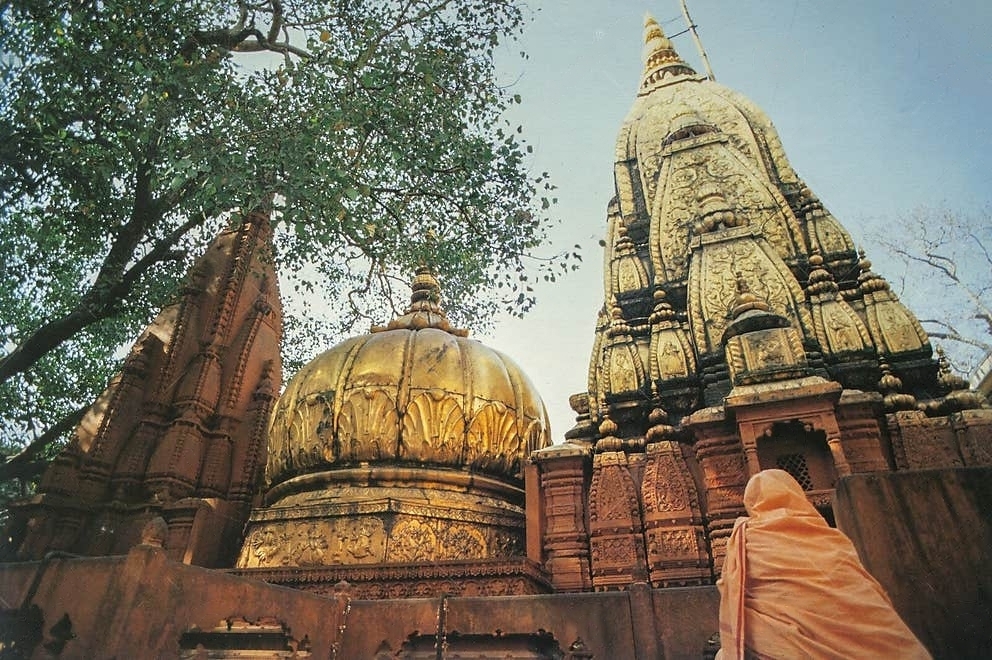Kashi Vishwanath Temple
The Kashi Vishwanath Temple, also known as the Golden Temple, is one of the most revered and iconic Hindu temples in India. Situated in the ancient city of Varanasi, this temple holds immense spiritual and historical significance. Here’s a description of this remarkable place of worship:
1. Spiritual Center: The Kashi Vishwanath Temple is dedicated to Lord Shiva, one of the principal deities in Hinduism. It is believed that a visit to this temple and offering prayers here can grant moksha, or liberation from the cycle of birth and death, making it a crucial pilgrimage site for millions of Hindus.
2. Location: The temple is strategically located along the western banks of the holy Ganges River in Varanasi, often referred to as Kashi. The city itself is one of the oldest inhabited places in the world and is steeped in spirituality and culture.

3. Historical Heritage: The temple has a rich history that dates back many centuries. It is believed to have been repeatedly destroyed and rebuilt over the centuries. The current structure was built in 1780 by Maharani Ahilyabai Holkar of the Maratha Empire.
4. Architectural Grandeur: The temple’s architecture is a stunning example of North Indian style, with its towering spire, intricate carvings, and the famous golden plating on its Shikara (spire). The intricate design and artistic beauty of the temple attract not only the devout but also architecture enthusiasts.
5. The Sanctum Sanctorum: Within the temple complex lies the sanctum sanctorum, where the main deity, Lord Vishwanath (Shiva), is enshrined. The sanctum is believed to be the epicenter of spiritual energy and is adorned with ornate decorations.
6. Varanasi’s Spiritual Aura: The Kashi Vishwanath Temple is situated in Varanasi, a city that is considered the spiritual capital of India. The entire city exudes an aura of divinity, and the temple is at its very heart. The Ganges River ghats in Varanasi are places where pilgrims perform rituals, and the temple is the main focus of spiritual activities in the city.
7. Cultural Significance: The temple has been a center for the promotion of art, music, and culture. It has played a pivotal role in nurturing classical music and dance forms. The temple precincts are often host to cultural events, which continue to preserve and promote India’s artistic heritage.
8. Challenges and Preservation: The temple has faced various challenges over the years, including natural disasters and security concerns. However, it has been steadfastly preserved and is a symbol of resilience and devotion.
9. Pilgrimage Destination: Devotees from all over the world visit the Kashi Vishwanath Temple to seek blessings, perform rituals, and immerse themselves in the spiritual ambiance. It is a place where faith and devotion transcend boundaries.
10. Restoration and Renovation: In recent years, efforts have been made to restore and renovate the temple and its surroundings, aiming to provide a more comfortable and organized experience for pilgrims and tourists while maintaining the temple’s historical and spiritual essence.
In summary, the Kashi Vishwanath Temple is not only a religious and architectural marvel but also a cultural and spiritual symbol that represents the enduring devotion of the people and the timeless heritage of India. It continues to be a place where the spiritual quest of millions finds its resonance in the heart of Varanasi, connecting the past with the present and the divine with the earthly.










penis enlargement
payday loan
buy viagra online
watch porn video
buy viagra online
buy viagra online
payday loan
[url=https://bmtadalafil.online/]generic tadalafil cheap[/url]
watch porn video
[url=http://predniso.online/]prednisone sale[/url]
payday loan
[url=http://azithromycinmds.online/]zithromax generic cost[/url]
Online poker
buy viagra online
[url=http://valtrexbt.online/]valtrex script[/url]
Inspiring quest there. What happened after? Take care!
buy viagra online
If you are going for best contents like me, just go to see this website daily as it gives feature
contents, thanks
[url=https://tadalafilu.online/]discount tadalafil[/url]
watch porn video
buy viagra online
buy viagra online
[url=http://tadalafilstd.com/]tadalafil 30[/url]
[url=http://prednisonexg.online/]prednisone 10mg for sale[/url]
scammer
payday loan
There’s definately a great deal to find out about this topic.
I like all the points you have made.
buy viagra online
penis enlargement
[url=https://valtrexid.com/]valtrex over the counter[/url]
scammer
buy viagra online
White Regal offers the best cleaning services in Manchester. Our professional cleaners provide deep home, Airbnb, carpet, gutter, gym and commercial cleaning at affordable rates.
[url=https://tadalafilstd.online/]cialis with prescription[/url]
payday loan
buy viagra online
buy viagra online
penis enlargement
[url=https://tadalafilstd.online/]lowest price for cialis[/url]
[url=https://bestprednisone.online/]how to buy prednisone online[/url]
payday loan
watch porn video
payday loan
buy viagra online
buy viagra online
Online poker
buy viagra online
buy viagra online